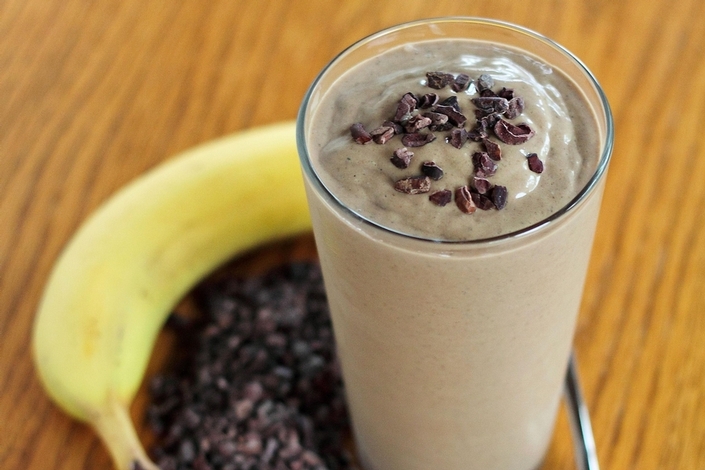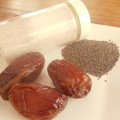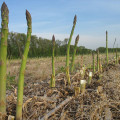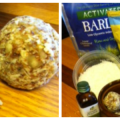 We are now in full swing of running, biking, hiking, swimming and kayaking season. Race events are scheduled every weekend. Retail sports stores are advertising the latest and greatest high tech running sneaker that is weightless and made with the most advanced materials to promise maximum performance. Brightly colored tech shirts and shorts that whisk the moisture away from the body, compression socks that give extra support and increase blood flow, headbands, hats, fuel belts, water bottles, and the advanced GPS wrist watches are all on display. Bike stores are now open with big signs in the windows offering summer sales.
We are now in full swing of running, biking, hiking, swimming and kayaking season. Race events are scheduled every weekend. Retail sports stores are advertising the latest and greatest high tech running sneaker that is weightless and made with the most advanced materials to promise maximum performance. Brightly colored tech shirts and shorts that whisk the moisture away from the body, compression socks that give extra support and increase blood flow, headbands, hats, fuel belts, water bottles, and the advanced GPS wrist watches are all on display. Bike stores are now open with big signs in the windows offering summer sales.
With all the new fancy gear out there, you’re ready to kick up some serious pavement. But, what do you do once you cross that finish line on foot, bike, kayak, or in the water? What do you do about recovery and what do you eat?
Recovery food is essential for your body after any type of workout—it’s actually the most important part of your day. During intense exercise, your body uses up stored glycogen in your muscles, can sweat up to 2 liters of water, muscles break down along with red blood cells, and the immune system is suppressed. The body needs proper recovery fuel so it can repair and grow after a hard workout. Shortening the length of time between workouts, restoring glycogen, repairing muscle fibers, and replacing lost water and electrolytes all help to keep the immune system in check while refueling. Exercise is a form of stress on the body, so feeding it good, healthy fuel keeps it balanced and healthy.
The type of recovery food and timing are crucial to your body’s repair. Consume food as quickly as possible—usually 30 to no more than 60 minutes after an exercise activity, because that is when your body is the most receptive to these nutrients. If nutrients are not restored, then more muscle tissue breaks down trying to put the body back in balance. Without proper fuel, it can cause fatigue, leading to a slow crawl across the finish line, illness, or possible injury due to your body not repairing properly—and no athlete wants that.
Generally, the ratio is 4:1 carbs to protein. The break down should be around 1.2g per kilograms of body weight or 0.2 – 0.8 of protein and smaller amount of carbs. This will have the same effect for replacing glycogen. Proteins in small amounts also help repair muscle tissue and prevent muscle soreness. So what types of carbs are essential in maintaining maximum recovery?
After crossing the finish line of an endurance race and grabbing the medal, you head over to the food. There are usually kegs of beer, stacks of pizza, boxes of bagels, bags of pretzels, muffins, Gatorade drinks and other refined carbs and some fruits. Carbohydrates are the best fuel to repair and restore the body and these foods are quick, simple and refined carbs that enter the body quickly for fast recovery that is needed for a depleted body. However, these foods don’t offer sustained energy or proper muscle repair, they’re not nutrient dense, and most often they have other ingredients in them that are not healthy or vegan. When buying recovery bars, drinks and powdered supplements, be careful and read the ingredients, since most have artificial sweeteners, preservatives, oils, and other additives that simply make them a glorified candy bar—even if they are vegan.
 Eating real, whole foods that are not processed and don’t have more sugar than a bottle of soda will ensure a healthier, stronger, quicker recovery so you can get back out there again. To make sure you’re getting the proper recovery fuel for your body, bring homemade smoothies to an event in a cooler and keep them in the car, or make your own bars and granola that you can bring along in a baggy for during the event or after. My husband and I have done this for many races and events. We feel much better about putting real food into our bodies that provide the proper nutrients to prepare us for our next race.
Eating real, whole foods that are not processed and don’t have more sugar than a bottle of soda will ensure a healthier, stronger, quicker recovery so you can get back out there again. To make sure you’re getting the proper recovery fuel for your body, bring homemade smoothies to an event in a cooler and keep them in the car, or make your own bars and granola that you can bring along in a baggy for during the event or after. My husband and I have done this for many races and events. We feel much better about putting real food into our bodies that provide the proper nutrients to prepare us for our next race.
Recovery bars, snacks and smoothies are simple and quick to make on a whim. Below is a delicious tasting smoothie that will give you all the proper recovery nutrients needed for repair, to ensure that you don’t end up crawling, walking or lying on the ground somewhere, unable to finish your race.
Banana Deliciousness Recovery Smoothie
Ingredients
1½ cups bananas (high in carbs and potassium, fiber, vitamin C, manganese)
4 dates, soaked (high natural glycemic, natural sweetener)
½ cup unsweetened non-dairy milk
½ cup coconut water (for electrolytes)
2 tablespoons cacao nibs + more for garnish (supports blood pressure and blood glucose)
1 teaspoon vanilla extract
Coconut flakes for garnish (optional)
Chia seeds (energy, high in carbs and protein)
1 tablespoon of peanut butter (for added protein and yummy flavor)
Spinach, handful (anti-inflammation, antioxidant, immunity)
Cinnamon (calcium, iron and manganese)
Sunwarrior chocolate protein, 1 scoop (or other favorite raw protein)
Instructions:
Place all ingredients in a blender and puree until completely smooth. Pour into a large glass, garnish with coconut flakes and cacao nibs. Enjoy immensely!







No Comments